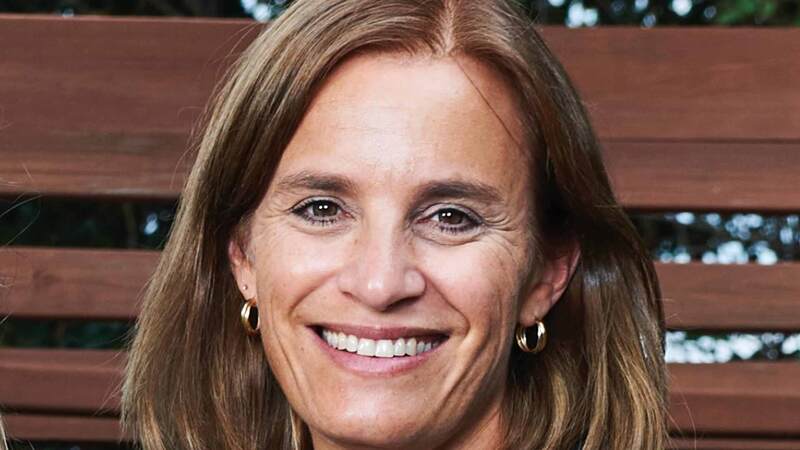You are viewing your 1 free article this month. Login to read more articles.
The profits from publishing: a publisher's perspective
Andrew Franklin, m.d. of Profile Books, offers a publisher’s perspective on the issue of author pay.
Sir Stanley Unwin, who founded the great independent house Allen & Unwin, was famous for his catchphrase: “The first duty of any publisher to their authors is to remain solvent.” He wrote one of the better guides to the book trade, The Truth About Publishing, and it is amusing that he wrote in his introduction: “The publisher’s task is no easy one and the whole process of publication is vastly more complicated than it was even a generation ago”. That was in 1926.
At the risk of being a bore, it is worth stressing that to be solvent, publishers must be profitable and —obviously—to be profitable their books must make a profit. Even subsidised poetry publishers must adhere to the “Micawber principle”. So this article is about numbers, because profit and cashflow are what keep us in existence. Like Unwin in his great book, it makes sense to follow the lifecycle of a book to see where it incurs costs and where it generates revenue. Every manuscript has a long gestation before it enters a publishing house but its existence for us begins when an editor wants to acquire it, frequently from a literary agent, but even before acquisition the editor is supposed to complete a financial appraisal. This is never a popular task.
In both 2016 and 2017, Profile paid out just over 22% of its total revenues to its authors. But where does the rest go?
Our appraisal form at Profile is a five-page Excel workbook. Other publishers’ appraisal forms are similar, though I have seen some that are much more intimidating. The editor must include the advance, the number of pages and formats, the proposed retail price, the home and international sales by key market, the rights income and marketing costs. This is where most editors are inclined to cheat.
Let’s suppose the figures are believable. The house can now make an offer for the book. Profile’s offer is always for an advance against royalties (and rights income if the publisher is taking, say, translation rights). In theory, publishers pitch advances at a level that will be covered by the royalties the author earns. In practice the advance is frequently not “earned out”, so the author is taking a higher share of the total revenue from the book than the royalties would earn. Of course, every publisher knows that you can publish profitably even if the advance doesn’t earn out. It is better when it does because that both reduces the risk of failure—a big “unearned” spells certain loss—and improves the business’ cashflow because you pay royalties when a book sells, so you have money from that sale. Advances are paid upfront.
Advances can be anything from a few hundred pounds, though rarely less than £1,000 for a reputable trade house, up to a reported eight- figure sum for last year’s multi-book contract signed by Bonnier with Wilbur Smith. In theory, they are paid at a market price. But trade book royalties are almost invariably the same, with little real variation. As all authors know, the bog- standard hardback royalty is 10% of the r.r.p., often rising after specified sales thresholds to 12.5% and 15%. Similarly, 7.5% is the standard paperback royalty, generally rising to 10%. But this is based on the r.r.p., not the money the publisher collects. Bookshops and wholesalers take more than half the r.r.p. now. Standard discounts are between 52% and 60%, and the biggest booksellers, naturally, get the biggest discounts. So an author on a 10% royalty for a £10 hardback is taking £1, or 10% of the total price. But if the publisher is selling the book at a 56% discount to bookshops, then the author will receive 23% of the publisher’s total net revenue. This is extraordinarily close to the 25% of net receipts that is now the gold standard for e-book royalties.
In export, where royalties are paid on net receipts, discounts can be even higher and publishers’ costs are greater because of the greater shipping and sales costs. So bookshops take more than half of the total and publishers give almost a quarter of their revenue to the author. In both 2016 and 2017, Profile paid out just over 22% of its total revenues to its authors. But where does the rest go?
Rising costs
Publishing accountants, like all others, split costs into two, the direct costs of selling each book and the overheads. The overheads are easy to enumerate but hard to control: salaries, heating, lighting, computers and desks, rent, business rates and the other essentials of every business, whether selling books or cream cakes. They also include less obvious expenses such as staff training, libel insurance (most publishers cover their authors’ costs in the event of a claim) and computer software. These are fixed costs and they have a way of rising beyond publishers’ control. Like all publishers, at Profile we aim to keep them down but salaries, like authors’ remuneration, are not generous in the book trade and costs continue to rise year on year.
Any author who has been to a Big Four (trade) publisher’s office will know they cut costs by cramming staff into huge open-plan offices that are not unlike old-fashioned factory production lines, no matter how elegant the space. Profile Books employs 40 people and its office in Angel costs approximately £335,000 a year to rent. Business rates are on top, and are about to increase significantly. Fixed costs also include capital expenditure. All that has to be paid for from the net receipts of sales of books. Apart from some small share of income from the sale of rights, there is no other way for publishers to pay for these things in order to provide the services that they do. As our most recent (2017) accounts show, our salary bill last year was £2.6m. We pay out much more in advances and royalties than in salaries, and we are not a “Gradgrind” employer.
These costs do not change whether we sell one book or one million. All publishers like to think we manage our overheads tautly, but whether we do or not, these are the inescapable costs of running our businesses before we start selling the books we publish.
And then there are the direct costs attached to each book. These are the costs of sales. For publishers to sell their books they must have a sales force, which never comes cheap. It can mean international offices too, in the case of the largest companies. Profile is part of the Independent Alliance, for which Faber provides some, but not all, of the sales arrangements. This all costs up to 12.5% of the total net sales revenue depending on the type of sale, with international sales more expensive.
The entire UK book trade operates on sale or return, with the supermarkets being the most “dangerous” customers. Profile’s total returns on UK sales are approximately 14%, but that average hides some books with far worse rates. Sometimes more than 40% or even 50%. Returns are a real cost, because the publisher has paid to print and deliver the books, and when the books come back they are generally pulped.
Distribution (warehousing and physically shipping books around the world) is one of two costs attached to physical sales only. They do not apply to e-books, of course. We budget around 7% of our net sales revenue for distribution, delivery and invoicing.
Marketing is a tricky one. Publicity, for Profile, is a fixed cost because it employs four full-time publicists and three full-time marketers who work on however many (or few) titles are published. But marketing costs—billboards, Tube and bus posters, digital and social media campaigns, and even author parties—are variable. Publishers tend to budget 6%–8% of expected net sales revenues for marketing. For the biggest titles each season that can run into tens of thousands of pounds, particularly if TV advertising is in the mix. In reality we have to decide on the campaign, buy the media slots and send the party invitations before we have any idea how many books we will sell. So this is a risky business—a difficult judgement call.
Finally there is the cost of goods sold (COGS), i.e. making the physical books. Printing and binding is relatively straightforward to calculate, and is generally between 8%–12% of the retail price. So 17%–25% of the net sales revenue; in other words, slightly less than the author share.
Put another way, in 2016 and 2017, pre-press and printing costs were 24% of Profile’s total revenues—just a little under our advance and royalty payments to authors. Roughly, 4,000 copies of a B-format paperback of 256 pages will cost 50p–75p per copy. A jacketed Royal-format hardback of 320 pages will cost £1.20–£1.60 a copy, if 3,000 are printed.
But there are also editorial and design costs. That 320-page hardback (let’s assume it’s non- fiction) will cost around £1,000 to copyedit and another £700 to proofread. Then there is the page design (£750) and perhaps an index (£700). Finally, and of the greatest importance, the jacket or cover design. At Profile we budget £1,000– £1,500 for that and employ a full-time art director and designer (overheads) on top of that. Trade publishers are investing very heavily in how their books look now.
Peaks and troughs
Where have we got to? A complicated picture of fixed costs and variable costs. Some of those variable costs go up with each sale (delivery, sales commission and the royalty—if the advance is earned out). Others are really a risk that attach themselves to the first copy and are “free” thereafter. So the editorial costs, fee for the jacket designer, index and marketing costs don’t change if the title sells well or dies a painful death.
Publishing is a risky business—each book is a challenge that should cover its costs. Some do and are brilliantly profitable. The successes subsidise the disappointments. Choosing and publishing books is an art, not a science.
At the end of all that, publishers must make a profit. Many of the biggest are subsidiaries of even larger entities which impose strict requirements on what must be achieved. But there is more than that. If you aren’t making a profit or breaking even, you are making a loss. That is unsustainable. Most companies have good and bad years.
The big publishers aim to make a profit of 10% on sales; most only manage it in good years. Most independents dip into loss from time to time. At Profile—unusually for independents—we have been profitable in every year since 1997, and for the past three years have made an average pre- tax profit of 12% of sales. This is rather more than most publishers, but we do not forget that, like all businesses in a capitalist world, we must make a profit. And we will never forget that if we do not, after a few years we will go under. We mustn’t lose sight of our duty to remain solvent.
Andrew Franklin’s article first appeared in the Author; this is an updated and edited version. Read Nicola Solomon’s blog ’The profits from publishing: authors’ perspective’ here.


















